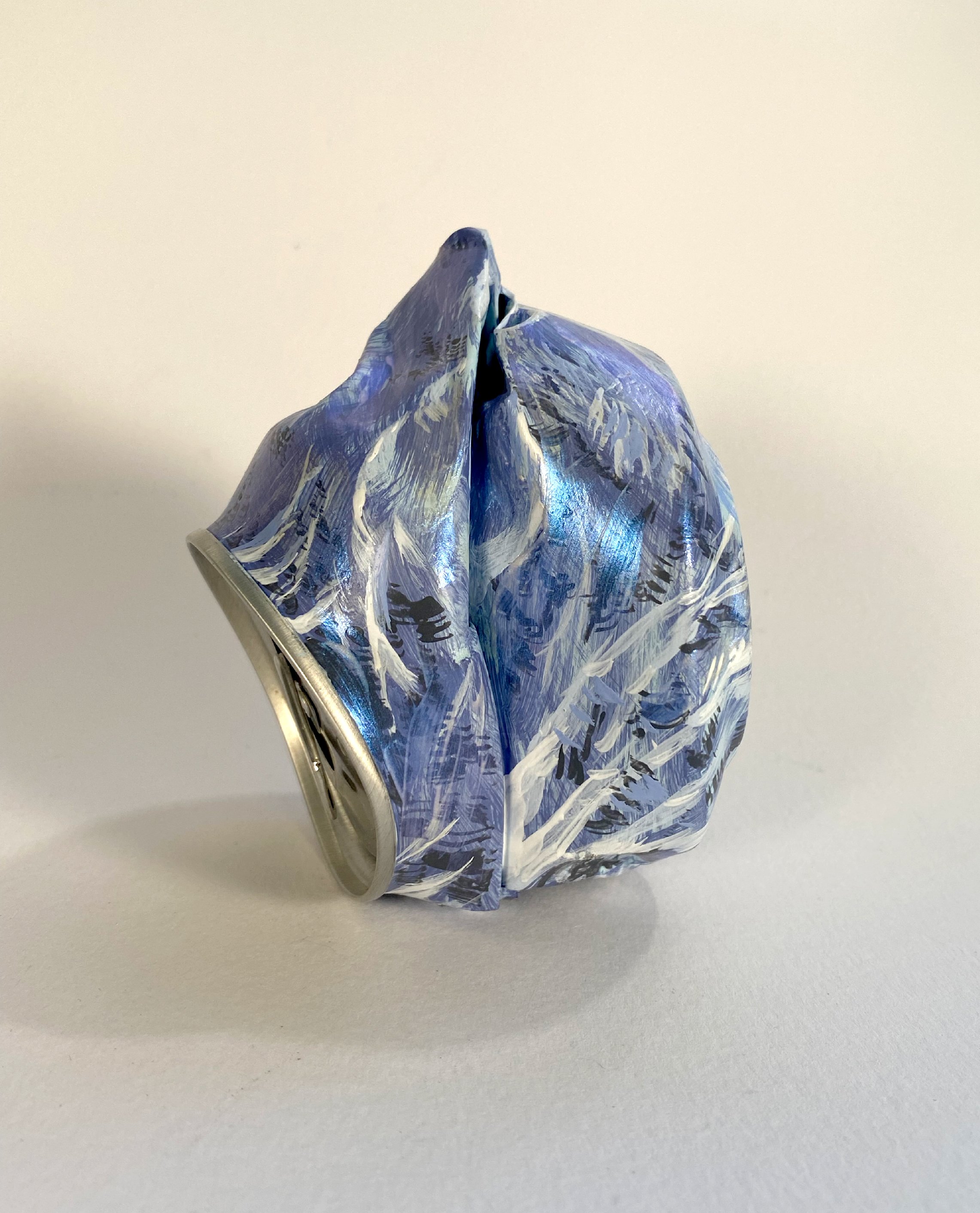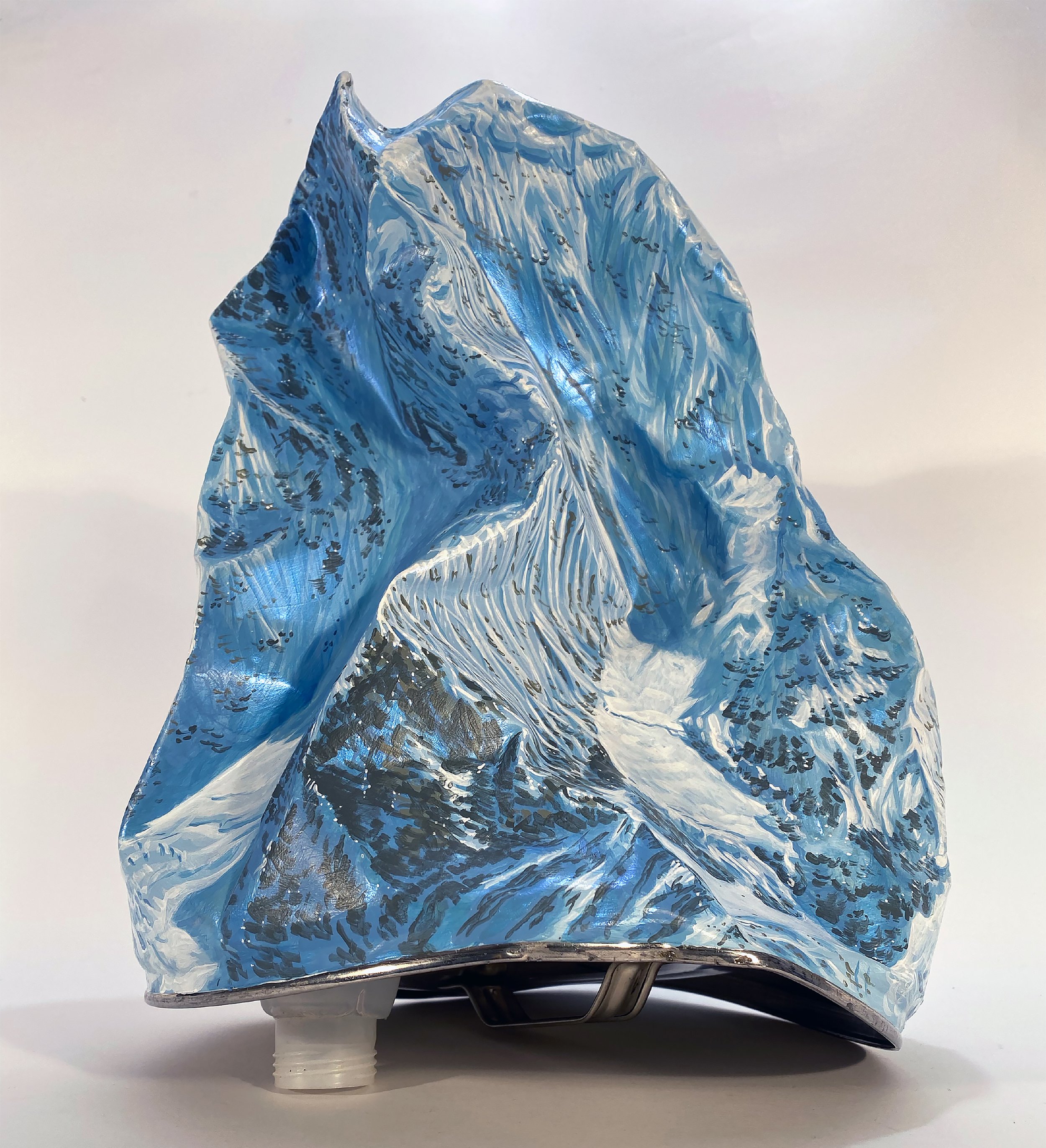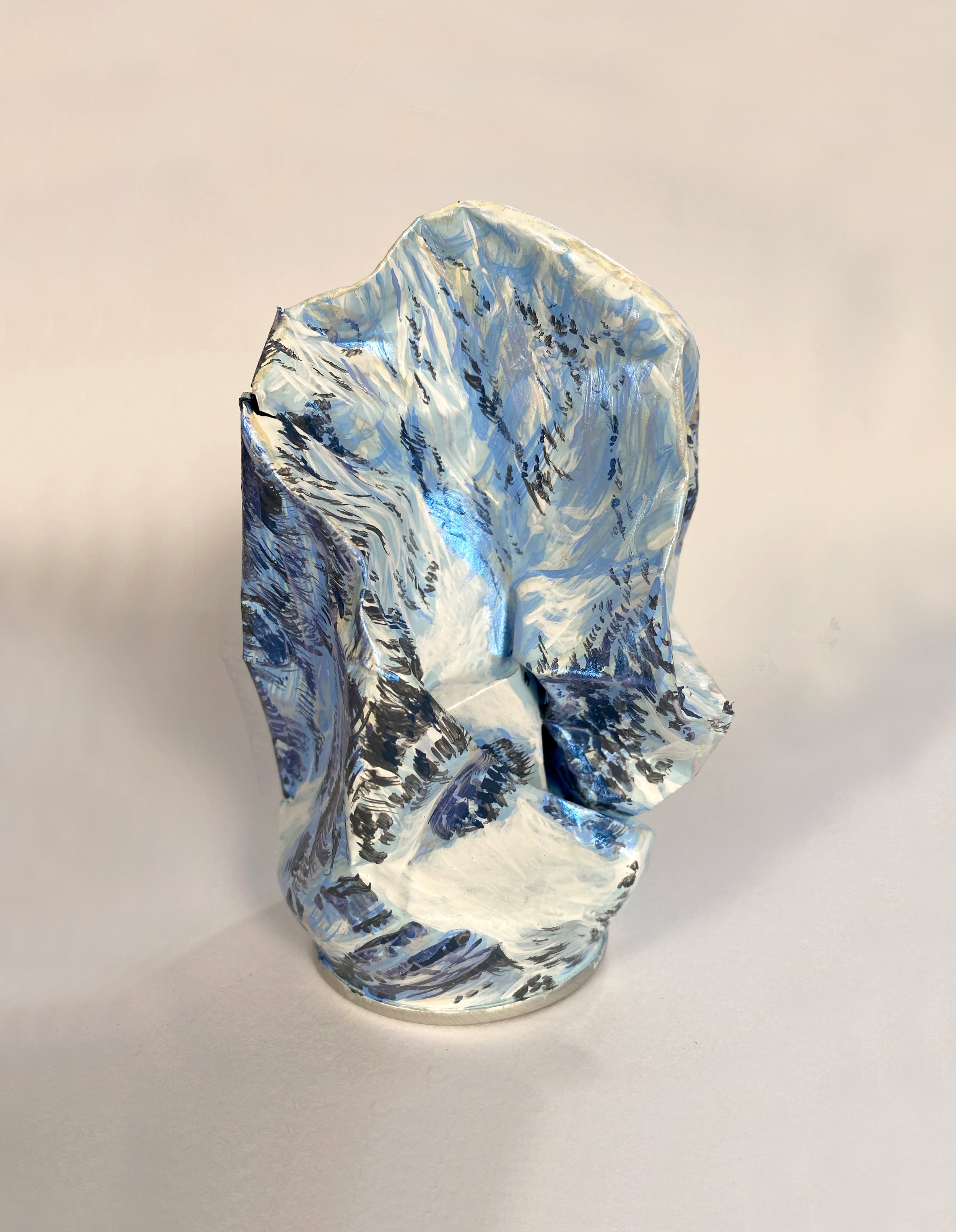Pumori
Pumori
Acrylic on recycled tin can.
9cm by 7cm by 7cm.
This can series Alex has made for his planned residency in Namche Bazaar, Nepal. Alex was given the brief to make art from waste which accumulates on Mount Everest. The project in collaboration with Sagarmartha next will be up-cycling rubbish to create sculptures of the surrounding himalayan mountains. Alex selects from the waste, a can that has features resembling part of a mountain or Valley. He then goes on to shape them more with hammers and finally builds up layers of paint to resemble the unique forms of the landscape such as rivers or waterfalls. The work comments on the fragile nature of the most sublime region of our planet, therefore the work responds to the need for conservation and pollution reduction. By taking the very waste that would other wise be burnt or buried on these mountains and transforming it into something of worth it helps to preserve these very places for future generations.
Pumori (Nepali: पुमोरि, Chinese: 普莫里峰) (or Pumo Ri) is a mountain on the Nepal-China border in the Mahalangur section of the Himalayas. Pumori lies just eight kilometres west of Mount Everest. Pumori, meaning "the Mountain Daughter" in Sherpa language, was named by George Mallory. "Pumo" means young girl or daughter and "Ri" means mountain in Sherpa language. Climbers sometimes refer to Pumori as "Everest's Daughter". Mallory also called it Clare Peak, after his daughter.
Pumori is a popular climbing peak. The easiest route is graded class 3, although with significant avalanche danger. Pumori was first climbed on May 17, 1962, by Gerhard Lenser on a German-Swiss expedition. Two Czechs (Leopold Sulovský and Zdeněk Michalec) climbed a new route on the south face in the spring of 1996.
Please note shipping costs are included in the final sale price.





